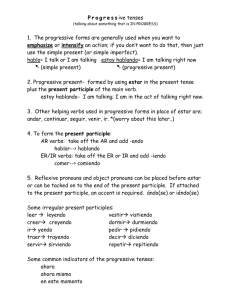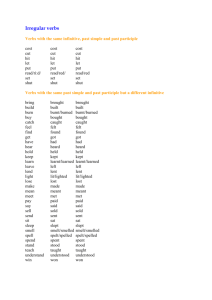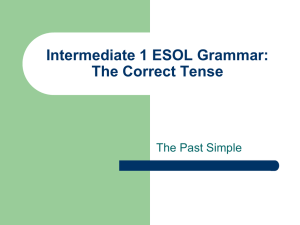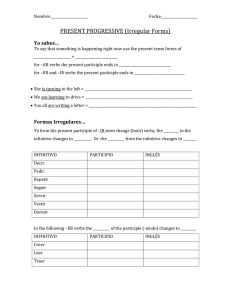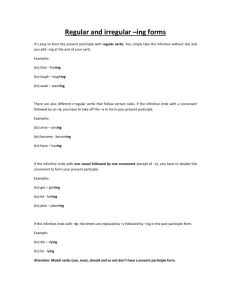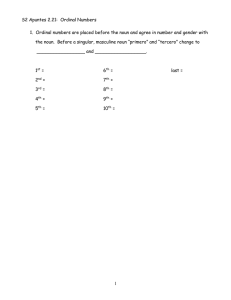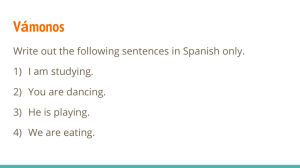THE PRESENT PROGRESSIVE TENSE When you want to
advertisement
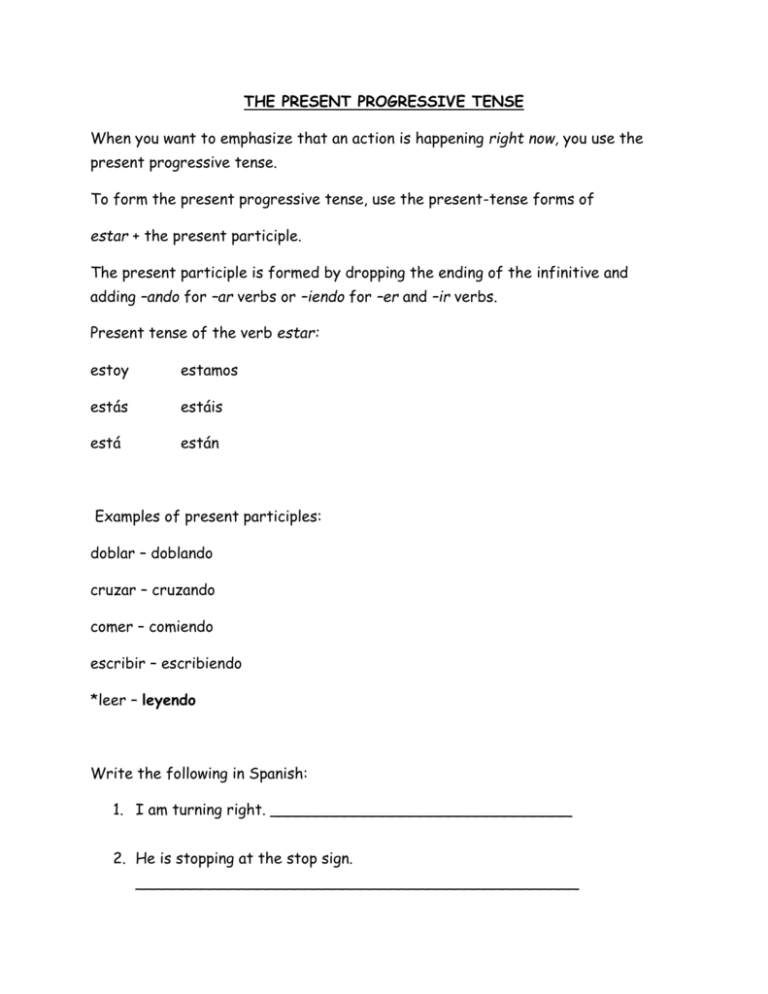
THE PRESENT PROGRESSIVE TENSE When you want to emphasize that an action is happening right now, you use the present progressive tense. To form the present progressive tense, use the present-tense forms of estar + the present participle. The present participle is formed by dropping the ending of the infinitive and adding –ando for –ar verbs or –iendo for –er and –ir verbs. Present tense of the verb estar: estoy estamos estás estáis está están Examples of present participles: doblar – doblando cruzar – cruzando comer – comiendo escribir – escribiendo *leer – leyendo Write the following in Spanish: 1. I am turning right. ________________________________ 2. He is stopping at the stop sign. _______________________________________________ 3. We are driving to the supermarket. _________________________________________________ 4. They are writing letters. ______________________________________ 5. You (tú) are waiting in the plaza. ______________________________________________________ Present Progressive: Irregular forms Some verbs have irregular present participle forms. To form the present participle of –ir stem-changing verbs, the e in the infinitive form changes to i, and the o in the infinitive form changes to u: decir – diciendo pedir – pidiendo repetir – repitiendo seguir – siguiendo servir – sirviendo vestir – vistiendo dormir – durmiendo In the following verbs there is a spelling change: creer – creyendo leer – leyendo traer – trayendo Write the following in Spanish: 1. The dog is sleeping. _____________________________________ 2. The students are repeating the words. ____________________________________________________ 3. I am reading a book. _____________________________________________________ 4. She is going straight. _______________________________________________________ 5. We are getting dressed. _______________________________________________________
